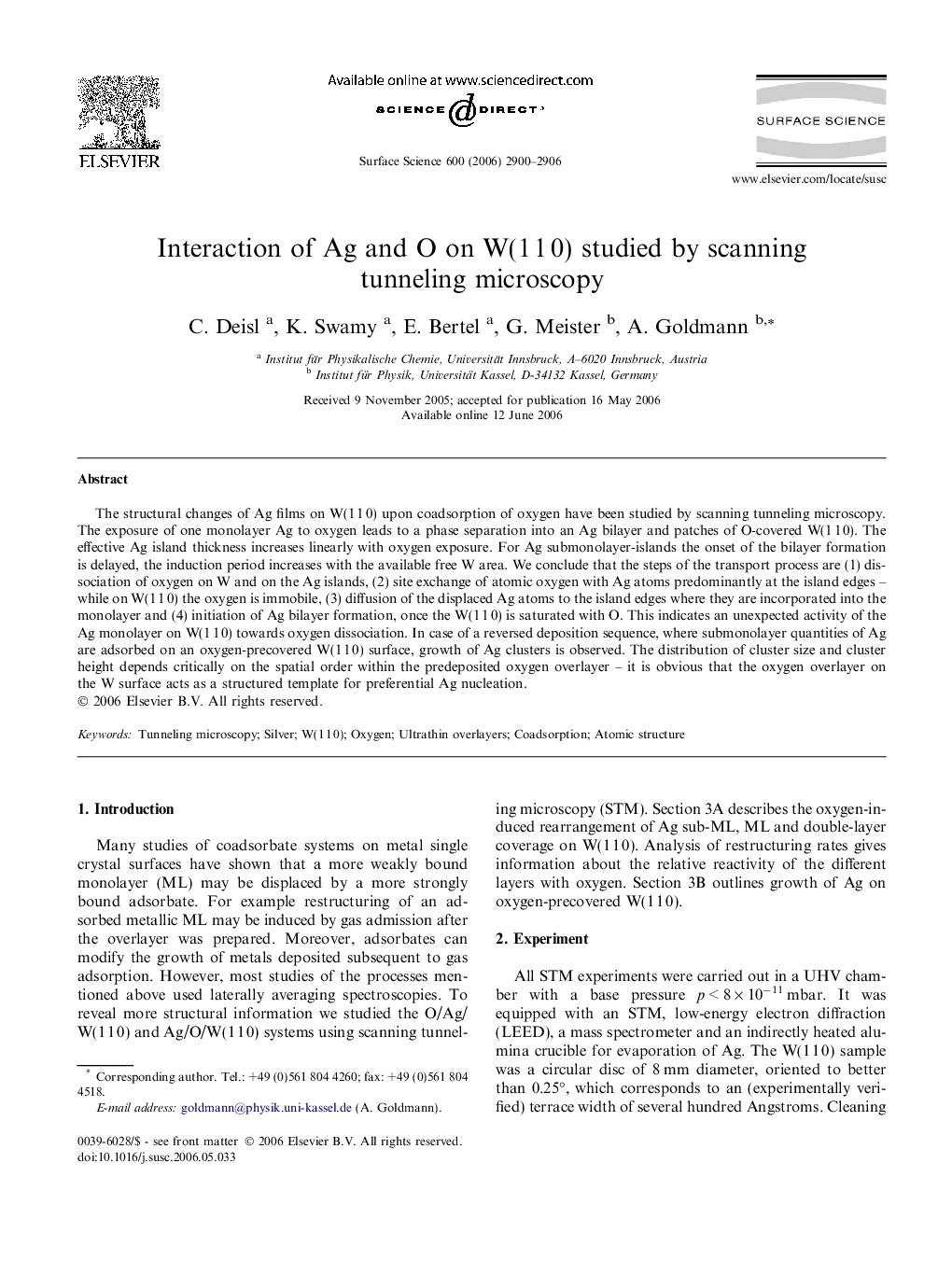| Article ID | Journal | Published Year | Pages | File Type |
|---|---|---|---|---|
| 5426694 | Surface Science | 2006 | 7 Pages |
The structural changes of Ag films on W(1Â 1Â 0) upon coadsorption of oxygen have been studied by scanning tunneling microscopy. The exposure of one monolayer Ag to oxygen leads to a phase separation into an Ag bilayer and patches of O-covered W(1Â 1Â 0). The effective Ag island thickness increases linearly with oxygen exposure. For Ag submonolayer-islands the onset of the bilayer formation is delayed, the induction period increases with the available free W area. We conclude that the steps of the transport process are (1) dissociation of oxygen on W and on the Ag islands, (2) site exchange of atomic oxygen with Ag atoms predominantly at the island edges - while on W(1Â 1Â 0) the oxygen is immobile, (3) diffusion of the displaced Ag atoms to the island edges where they are incorporated into the monolayer and (4) initiation of Ag bilayer formation, once the W(1Â 1Â 0) is saturated with O. This indicates an unexpected activity of the Ag monolayer on W(1Â 1Â 0) towards oxygen dissociation. In case of a reversed deposition sequence, where submonolayer quantities of Ag are adsorbed on an oxygen-precovered W(1Â 1Â 0) surface, growth of Ag clusters is observed. The distribution of cluster size and cluster height depends critically on the spatial order within the predeposited oxygen overlayer - it is obvious that the oxygen overlayer on the W surface acts as a structured template for preferential Ag nucleation.
